As stylish as they are functional, there’s nothing like a sophisticated wristwatch or pocket watch. Timeless and elegant, a quality watch always makes the perfect accessory, and is a thoughtful gift for any occasion. Available in a variety of metals, colors and styles, there is a watch to suit everyone’s unique personality and fashion tastes.
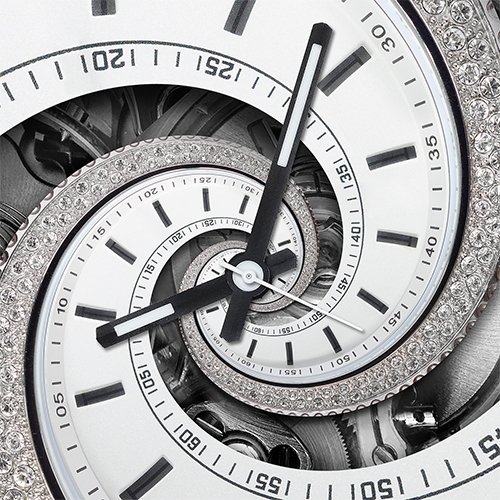
Wristwatches have been around since the 1700s, when nurses wore watches on bracelets or armbands to keep them out of the reach of babies and children. But even before that, people were affixing timepieces to their wrists. In 1571, Queen Elizabeth received a watch attached to a bracelet from her friend Robert Dudley, the Earl of Leicester. In 1623, mathematician and philosopher Blaise Pascal wore his pocket watch on his wrist. Wristwatches remain a popular statement today. There are so many watch collectors that special watch clubs are common in many neighborhoods. Vintage watches also are selling for record prices.
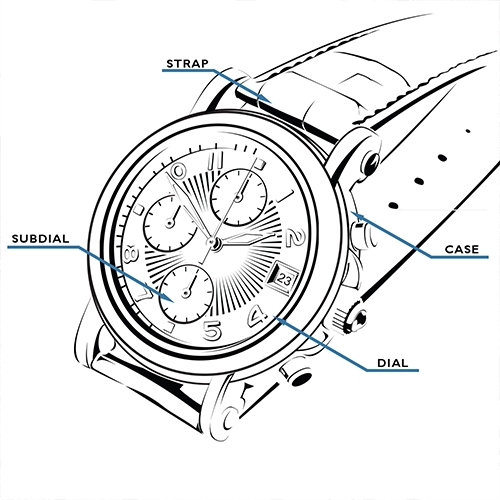
Fine timepieces are made up of several components, expertly designed and assembled by highly skilled watchmakers. These components, listed below, work together to create the form and function of your unique watch.
Case — The case holds the movement, protecting it from the elements and wear and tear. It can be made from different metals, and available in many shapes (see Case Shape below).
Dial — The dial is a plate with a metal base which indicates the hours, minutes and sometimes seconds.
Subdial — A small dial placed within the main dial that provides additional information, such as a chronograph.
Strap — The band of leather or other non-metal material that harnesses the watch to the wrist. When made of metal, this band is called a bracelet.
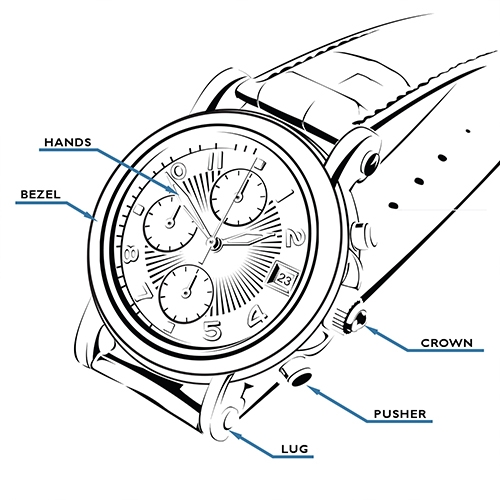
Lug — Also called horns, lugs are used to secure the strap or bracelet to the case.
Pusher — Commonly found on watches with a chronograph, the pusher is a button located outside the case which controls specific functions, such as setting the date.
Crystal — Often made of glass or synthetic sapphire, this transparent cover protects the watch dial and reduces glare.
Hands — Indicators that move over the dial and point to the hour, minute or second. Watches usually have three hands, one for each indicator of time.
Crown — A button on the outside of the case used to set the time and calendar. On mechanical watches, it also is used to wind the mainspring.
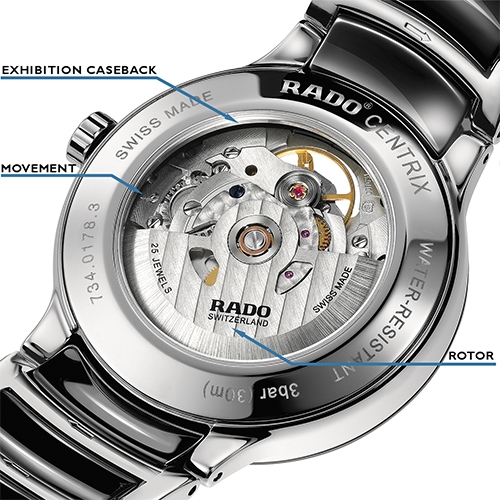
Exhibition Caseback — The back of the watch case fitted with a clear mineral or sapphire crystal, which shows the movement finishing.
Movement — Like an engine, this is the inner mechanism of a watch that keeps time and powers its functions.
Rotor — On automatic watches, this is an oscillating weight attached to the movement that winds the mainspring.
Bezel — Often made of metal, this is a ring around the crystal that holds the crystal in place.
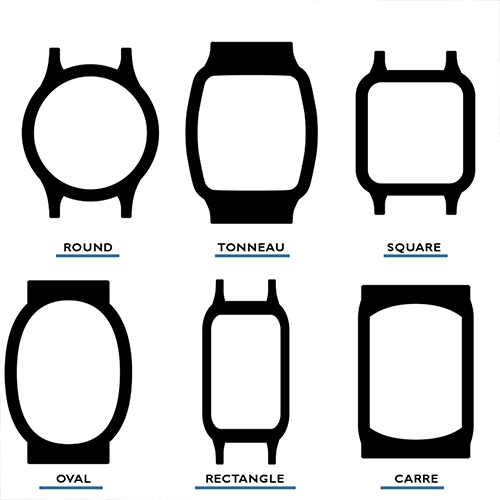
The case holds the movement, protecting it from the elements and wear and tear. The case is available in many shapes, including round, square, oval, rectangular, tank, carre, carage, tonneau and asymmetrical. It can be made from different metals, including platinum, 18K gold, 14K gold, gold plate, stainless steel, titanium, ceramic, tantalum, tungsten carbide, PVD or diamond-like carbon.
We value your privacy
On our website, we use services (including from third-party providers) that help us to improve our online presence. The following categories of cookies are used by us and can be managed in the cookie settings. We need your consent before being able to use these services. Alternatively, you may click to refuse to consent, or access more detailed information and change your preferences before consenting. Your preferences will apply to this website only. You can change your preferences at any time by clearing your browser history/cache or visiting our privacy policy page.
By authorizing third-party services, you allow the placement and the reading of cookies and the use of tracking technologies required to keep our website reliable and secure.